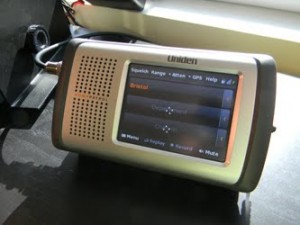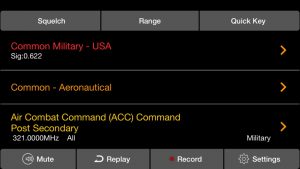One of the most popular ways to listen to the local scanner action these days is via a live-streaming service over the Internet. By far the largest source for this is Broadcastify.Com. While this is a great place to listen, it is dependent on someone hosting a scanner for the area you want to listen to. If no one does you can do it yourself. Here is what you need to set up your own feed:
Step 1: Make sure there is no feed already covering the traffic you wish to stream. If there already is one look at the noted for that feed and see if there is something different that you will do.
Step 2: If you are not already a RadioReference or Broadcastify member (with user name and password) set up an account. You can set up a free account, paid accounts offer great benefits but are not needed to host a feed. If you are already a member skip this and go to Step 3.
Step 3: Go to the Broadcastify site and submit a Feed application. They need your information, the channels you plan to stream and some other details. Once you submit your application it takes a few days (usually) for a response, and if approved they provide a code that is entered in your feed software to enable it.
Step 4: Set up the hardware. This is the computer that you are going to use and the radio itself. You will need an audio cable to connect the computer and radio. If you are using a Uniden scanner you can also connect a USB or serial cable so allow channel tags to be sent along with the radio traffic. See below for the best scanners to be used for feeds.
Step 5: Set up the software. The software is free from Broadcastify, you can download it there. It is pretty simple to install and set up, print out the instructions that come with it and follow them. If you follow them correctly it will work great!
Step 6: Adjust the levels. Once your feed is live listen to it and make sure the audio levels are set properly. If the channels you set up are not very active try programming in the local weather channel for a few minutes to use to set the levels properly. Once you have the levels set where they sound best be sure to note the settings in case you need to move something later. Don’t forget to get rid of the weather channel!
What is the best radio for a feed? Well, it is the radio you have that will listen to the traffic you want to stream. Remember, once you commit to hosting a stream that radio must be dedicated to that stream 24/7.
If the radio you use does not have a record jack then you need to set the volume and leave it where it is. Be sure to mark the level with a dab of White-Out in case it gets moved.
For feeds the Uniden BCD15X (analog) and BCD996P2 (digital) are favored by many streamers since they are reasonably priced and have a record jack on the back. The Record jack is ideal for feeds, as the sound level is not affected by the volume control. You set the sound level with the computer’s sound controls and you can use the scanner volume to allow you to listen to the scanner locally without affecting the feed volume. They also support sending channel tags so the listener can see the channel names.
Streaming hints and tricks:
No one likes to hear static, noise etc. Make sure you monitor your stream to be sure that it doesn’t lock up on noise or interference. Make sure the audio levels are good and that the feed sounds good.
How many channels can I stream? The best answer is less is more. If you have a lot of channels or a bunch of real busy ones then the scanner is going to be busy all the time and some channels are going to be missed. Some really busy feeds (like Chicago PD) have just a single channel that is active almost continuously.
What kinds of channels can I stream? These rules are listed in the Terms of Service for the streaming service. Broadcastify has rules against certain tactical or sensitive traffic. Make sure none of the channels you have include the prohibited traffic.
Can I stream 2 radios at the same time? Yes! Set up one radio to the left channel and the other to the right. Possible scenarios are police on one and fire on the other. Make sure you note this in the feed description!
What do I do if the agency doesn’t want me to stream them? Well, that is up to you. Streaming is legal and the agency cannot force you to stop streaming their traffic. They can however add encryption, then it will not be able to be heard at all by anyone.
Broadcastify has a complete set of rules and procedures on it’s page at Broadcastify.com. If you use a different service be sure to read their rules before setting up your feed.




